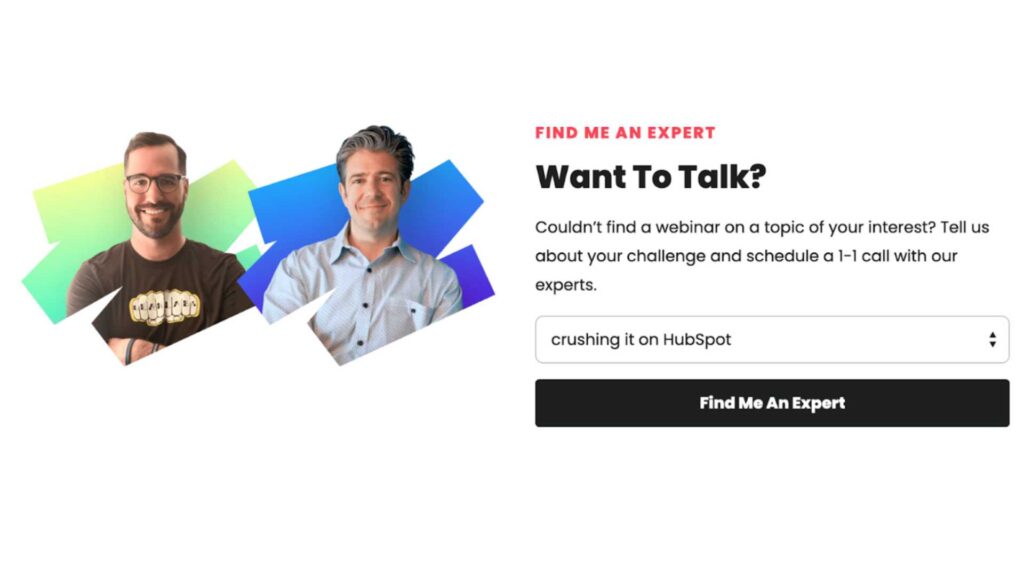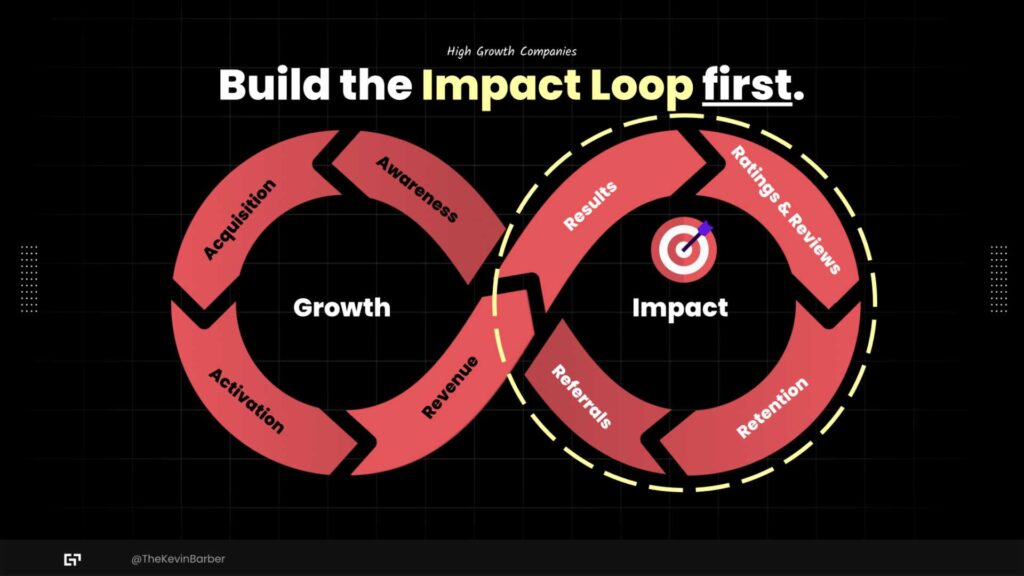
You ask the head of marketing how the team is doing and get a giant thumbs up. 
“Our MQLs are up!”
“Website conversion rates are at an all-time high!”
“Email click rates have never been this good!”
But when you ask the head of sales the same question, you get the response that echoes across sales desks worldwide — the leads from marketing suck.
If you’re in this boat, you’re not alone. The issue of “leads from marketing suck” is a common situation in most organizations. In a HubSpot survey, only 9.1% of salespeople said leads they received from marketing were of very high quality.
Why do sales teams hate marketing-generated leads? And how can marketers help their sales peers fall in love with their leads?
Let’s dive into the answers to these questions. Then, I’ll give you my secret lead gen kung-fu to ensure your sales team loves their marketing leads.
Marketers Must Take Ownership
“I’ve hit the lead goal. If sales can’t close them, it’s their problem.”
How many times have you heard one of your marketers say something like this? When your teams are heavily siloed, it’s not hard to see how they get to this mindset — after all, if your marketing metrics look strong, they’ve done their part, right?
Not necessarily.
The job of a marketer is not to drive traffic or even leads. The job of the marketer is to create messaging and offers that lead to revenue. Marketing is not a 100-meter sprint — it’s a relay race. The marketing team runs the first leg and hands the baton to sales to sprint to the finish.
To make leads valuable beyond the vanity metric of watching your MQLs tick up, you need to segment and nurture them. Screen the leads to see if they meet the parameters of your ideal customer profile. If yes, nurture them to find out how close their intent is to a sale. Only then should you pass the leads to sales.
Lead Quality Control is a Bitter Pill that Works
Tighter quality control might reduce your overall MQLs. Still, it will ensure only the relevant leads go to sales, which is a win for your team and your organization.
This shift will require a mindset shift for your marketing team: instead of living and dying by the sheer number of MQLs, you need to create a collaborative culture between sales and marketing. Reinforce that “strong” marketing metrics that result in poor leads going to sales aren’t really strong at all.
When you foster this culture of collaboration and accountability, it will be easier for the marketing team to receive feedback from sales about lead quality without getting defensive.
Remember, the sales team is only holding marketing accountable so the entire organization can achieve the right results. It’s not sales vs marketing — it’s sales and marketing working together to get a great result. Nothing more, nothing less.
We’ve identified the problem and where we need to go. So, how you do you get there?
Fix #1: Focus On High ROI Marketing Activities First
What is more valuable to you:
- One more blog post for a few more views?
- One great review that prospective buyers strongly relate to?
Hopefully, you’ll choose the latter. After all, talking to customers and getting a solid testimonial can help your sales team close leads today. Current customers talking about their previous issues, the other solutions they tried, why they chose you, and the results you helped them achieve is marketing gold.
On the other hand, even the best blog content will take months to gain enough traction to impact your revenue.
Still, many marketers who say they want to prioritize customer reviews focus all their efforts on blog content and other “top of the funnel” (Awareness, Acquisition, and Activation) efforts.
The bottom half of the growth marketing funnel (Retention, Reputation, and Revenue) often gets ignored, even though it’s where you’ll find some of the highest ROI activities.

Most marketers know retaining a customer is easier than acquiring a new one. But knowing this and working with sales on retention and account expansion are two different things.
When you start focusing on retention, upselling, and expansion, your entire organization will feel it, from sales to customer success. These happier customers will increase your average account value and drive awareness through strong word of mouth, giving you one heck of a win/win.
Winning the Retention, Reputation, and Referral game also helps feed your Awareness, Acquisition, and Activation activities:
- Increasing customer retention means more dollars stay within your organization to help achieve revenue goals and fund lead gen initiatives.
- A fully functioning referral system lowers your customer acquisition cost (CAC) because these leads are already warm coming in the door.
- Case studies and reviews are powerful marketing assets for lead gen and nurture activities as they demonstrate how you’ve solved identical issues for other companies.
Remember that the bottom half of your marketing and sales funnel is just as important as the top half. After all, there’s no point pouring leads into a leaky funnel. Instead, you want to build a frictionless, powerful growth engine that brings in the right leads, nurtures them into customers, and then delights those customers to the point that they can’t help but rave about you.
So, build a strong foundation and start from the bottom up. You’ll find a better return on your investment.
Fix #2: Join Sales Calls to Better Understand Your Target Audience
You can’t market well what you don’t know how to sell.
Your sales team speaks directly to customers, understands their pain points, and knows the language they use to talk about those pains. Your marketing team needs this information to craft the perfect marketing messaging your target audience will identify with.
When marketers join sales calls or speak to existing customers, they get firsthand introductions to these pain points. Often, marketers realize that customers’ pain points and reservations are very different from those they address in their messaging.
Once you understand your ideal customers’ objections, anxieties, and pressing questions, you can create content and messaging to remove some of these reservations before the sales call. This effort removes a barrier for your sales team, resulting in more SQLs.
Fix #3: Create Collateral That Closes Deals
One-pagers, landing pages, PDFs, decks — sales collateral could be anything that helps increase the chance of closing a deal. Let me share an example from Lean Labs.
Our webinar page has a CTA form that allows visitors to talk to our team. Instead of a simple “get in touch” form, we created a drop-down segmentation based on the user’s challenge and need. This step helps the reader feel seen, gives them hope that they’ll receive real value from the interaction, and provides unique content to users based on their selection.

So, if they select I need help with crushing it on HubSpot, they’ll get a landing page with HubSpot-specific content (including a video) and a meeting scheduler.
Speaking directly to your audience’s needs and pain points through these steps dramatically increases the chances of them booking a call. Why? Because instead of trusting that a generic “expert” will be able to help them with their highly specific problem, they can see through our content and our form design that Lean Labs can solve their most pressing pain point.
Fix #4: Focus On Reviews and Create an Impact Loop
A lot of people think good marketing is expensive. You know what’s even more expensive? Bad marketing.
To get the best ROI on your marketing efforts, you need to create a marketing machine that pays for itself. When you create this machine, you need to think about two loops: the growth loop and the impact loop.

- Growth loop — Awareness
 Acquisition
Acquisition  Activation
Activation  Revenue
Revenue  Awareness: This is where most marketers start.
Awareness: This is where most marketers start. - Impact loop — Results
 Reviews
Reviews  Retention
Retention  Referrals
Referrals  Results: This is where great marketers start.
Results: This is where great marketers start.
Most marketers start with their growth loop and then hope that traction feeds into their impact loop. However, the reality is that starting with your impact loop is going to be far more likely to set your marketing engine up for success.
Let me share a client story to show you what this looks like in real life.
Client Story: 4X Website Leads In A Single Quarter
We partnered with a health tech startup looking to grow their website leads. One way to grow website leads is to boost organic traffic, of course, but any organic play is going to take time. If you’re playing the SEO game alone, quadrupling conversions can take up to a year or longer.
But we did it in a single quarter. Here’s how.
We realized that the startup’s demos were converting lower than industry standards. A little more digging showed us why: our client was new enough to the market that the average person didn’t trust them enough yet to want to invest in checking out a demo. So, what did we do?
We prioritized the last part of the funnel: reputation.
We ran a 5-star reputation campaign to collect reviews. Once we had the reviews we needed, we showcased them at critical parts of the website and then made sure those same reviews were posted and shown on other third-party review platforms.
Remember that reputation plays are vital, and they’re one of the plays startups often neglect at best and ignore at worst. What others say about your business is ten times more important than what you say about yourself.
By providing customer validation at critical points in the buyer journey, we were able to 4X the website leads in a single quarter!

So, when you talk to customers, always look for opportunities to drive review/referral conversations and use them in marketing collateral throughout the buyer journey.
Fix #5: Launch Phantom Offers for Higher Quality Leads
You may be reading this post thinking, okay, my lead magnets and offers might be way off the mark, but how will I get the budget to create a new one that might not even work?
It’s an age-old issue: marketing teams invest way too much time and resources into creating lead magnets that fail to generate quality leads.
One way to improve your chances of success, remain nimble, and stay aligned with your audience without breaking the bank is to create phantom offers, i.e., gauge the audience interest in your lead magnet before you create them.
For example, if you want to create a “World Security Report” for Chief Security Officers, don’t do all the research and complete the report as Step One. Instead, tease the offer to your audience before you spend time making it. Put an offer on your site asking visitors to join the waitlist for this report. Then wait and see how that phantom offer converts.
This is precisely what we did for a report by Allied Universal that ended up generating 80 conversions before its release.

The best thing about a phantom offer is that it’s a win/win scenario:
- Best case: You get conversions even before you create your lead magnet.
- Worst case: You save resources by not creating a lead magnet no one wants.
Remember, You’re On The Same Team
We’ve talked a lot about the reasons your marketing leads might suck. However, remember that it’s not all on marketers, either. At the end of the day, marketing and sales professionals are on the same team. They are not in competition with each other. They are allies working together toward a common goal.
Smaller companies — or anyone under $10M in net new revenue — shouldn’t even separate sales and marketing into different departments. These teams need to be so in sync with one another that your best bet is to align them into a single growth team, one cohesive front with a single goal: profitable customer acquisition.
Interested in learning more about the growth marketing mindset? Check out the Lean Labs Growth Playbook that’s helped 25+ B2B SaaS marketing teams plan, budget, and accelerate growth.
The post Why The Sales Team Hates Your Leads (And How To Fix It) appeared first on DigitalMarketer.
